| Next |
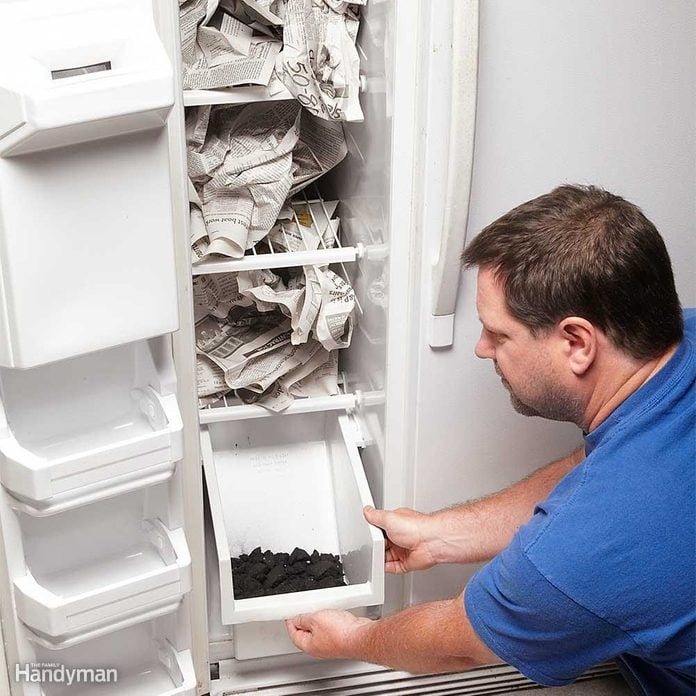
Clean a Stinky Fridge with Newspaper and Charcoal
You don’t have to live with a stinky fridge. Follow these instructions for using newspaper and charcoal, and the odors will be gone within a few days.
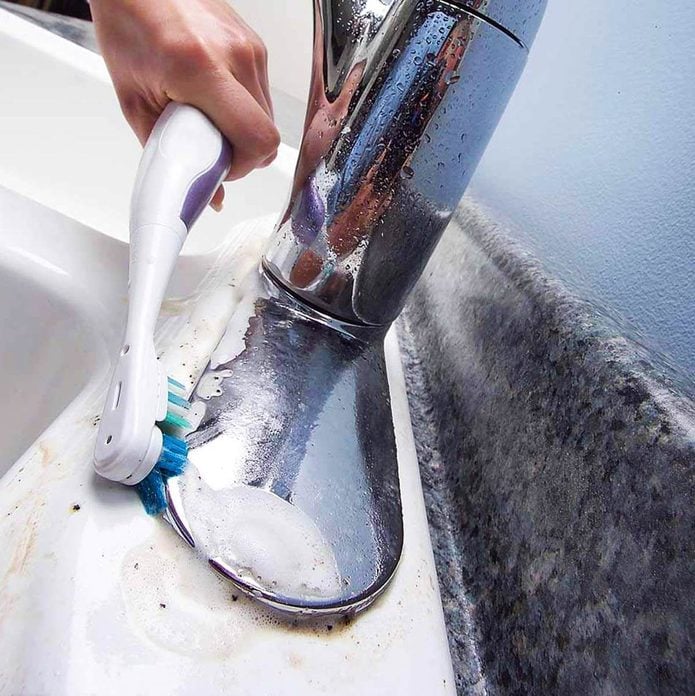
Scour Off Grime with an Electric Toothbrush
With a cheap electric toothbrush, you can add a modern twist to routine cleaning. Rapid vibration will quickly scrub out stubborn dirt, while the long handle can get to hard-to-reach places without all the elbow grease.
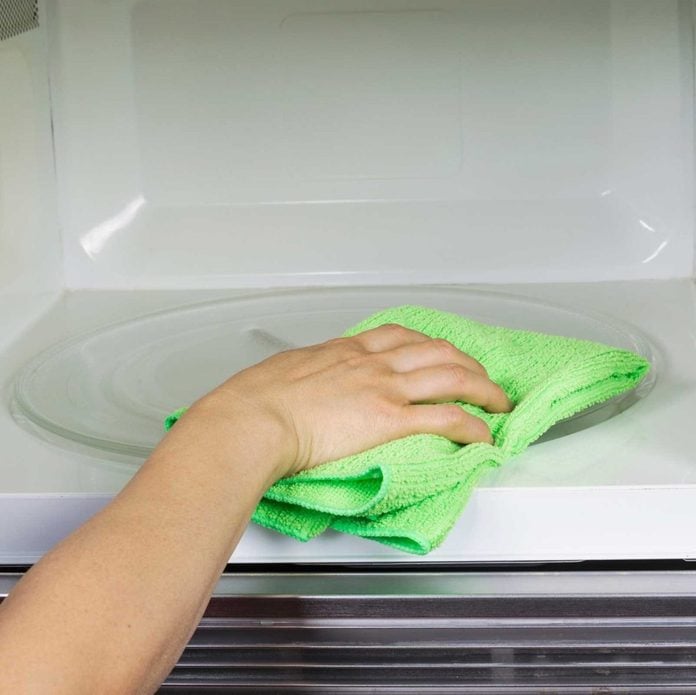
Cut Grease with a Hot Rag
To clean grease and dirt built up on kitchen cabinets, first heat a slightly damp sponge or cloth in the microwave for 20 to 30 seconds until it’s hot. Put on a pair of rubber gloves, spray the cabinets with an all-purpose cleaner containing orange oil, then wipe off the cleaner with the hot sponge.
For stubborn spots, let the cleaner sit for five minutes first. Wipe in the direction of the wood grain. Rinse and reheat the sponge as it becomes saturated. Then wipe the cabinets with a cool, damp cloth. The orange oil leaves a shiny coating. This works for any wood or metal surface.
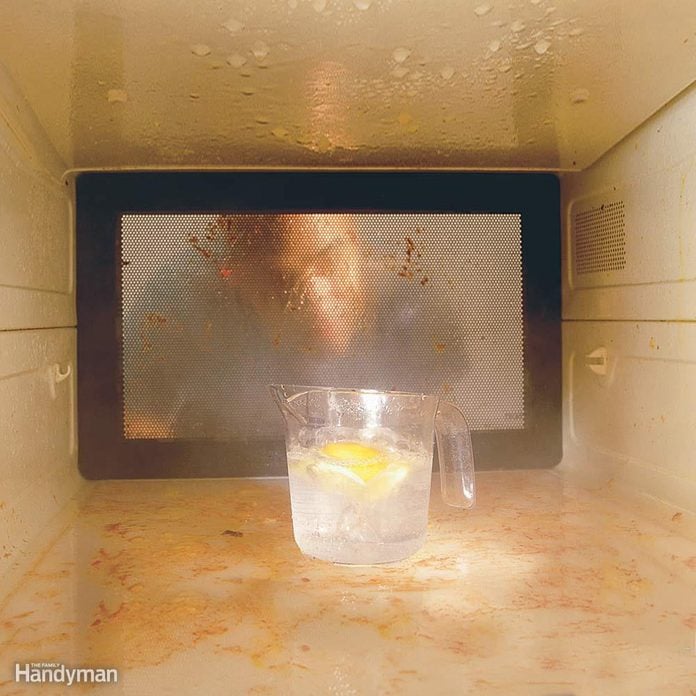
Clean a Grubby Microwave with Lemon Water
It’s easy to clean baked-on food and spills from your microwave.
Here’s how: Partially fill a measuring or coffee cup with water and add a slice of lemon. Boil the water in the microwave for a minute, and then leave the door closed and let the steam loosen the mess. After 10 minutes, open the door and wipe away the grime.
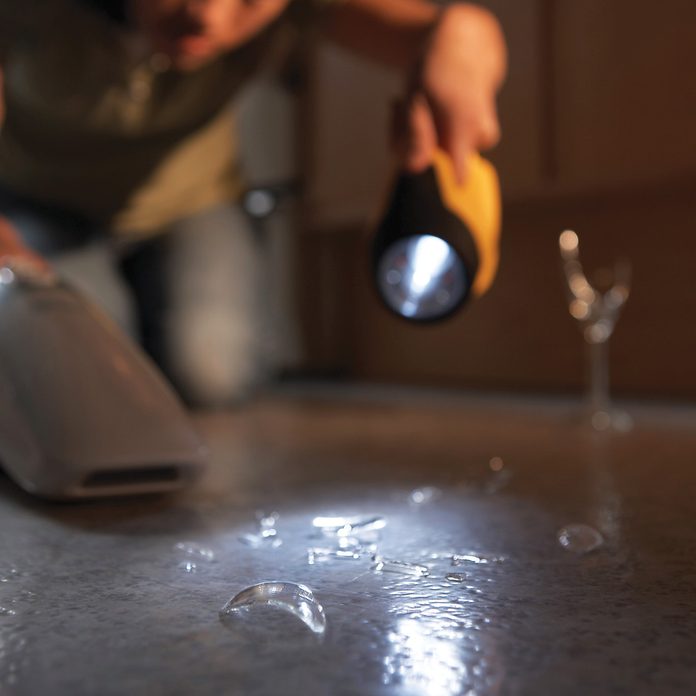
Clean Up Broken Glass in a Flash
Cleaning up broken glass is a real pain, but it’s nothing compared with a glass shard in the foot. Get a flashlight and turn off the overhead lights. Scan the floor with the flashlight from a low angle and the shards will glisten, making even the littlest piece stand out.
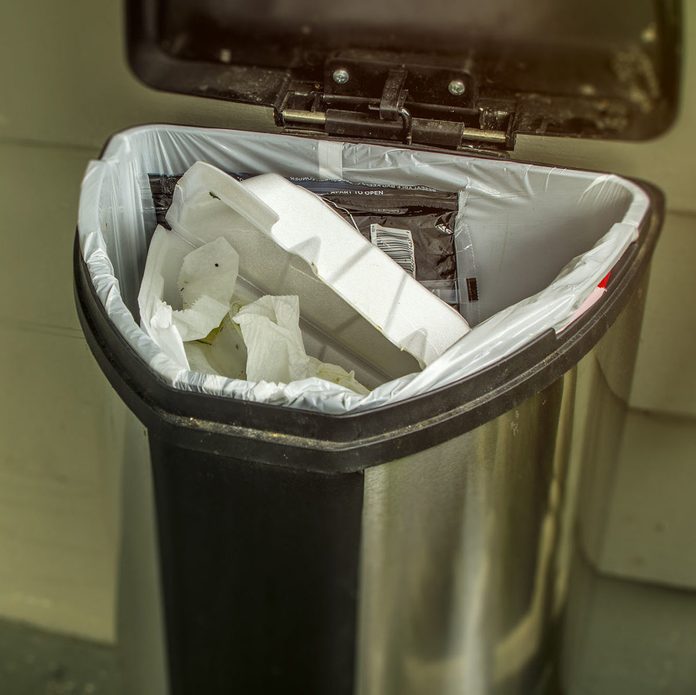
DIY a Garbage Bag Holder-Upper
Tired of the garbage bag slipping down into the trash can? Cut out the middle of the lid with a utility knife and just snap the outer rim over the bag to keep it in place. This works great for recycling, not so great for stinky stuff!
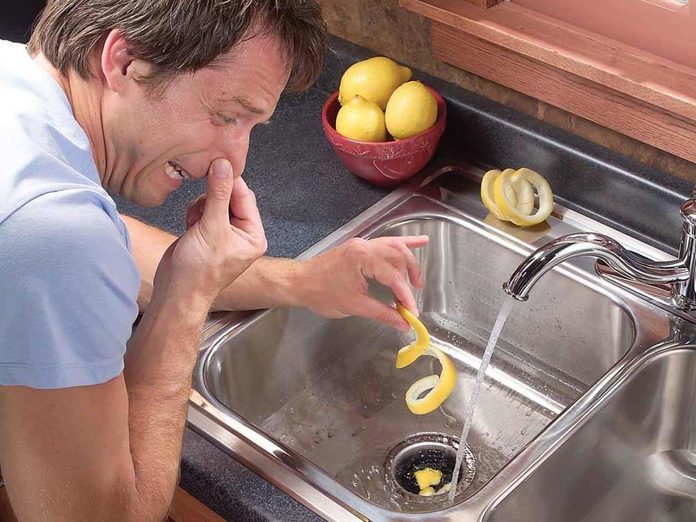
Deodorize Your Stinky Disposer with Citrus
If your disposer has developed an odor, it may contain bits of rotten food. Here’s how to clean them out:
- With the water running at about half throttle, drop in orange or lemon peels. Run the disposer for five seconds. Citric acid from the peels softens crusty waste and attacks smelly bacteria. Give the acid about 15 minutes to do its work.
- Turn on the water and the disposer and drop in a few ice cubes. Flying shards of ice work like a sandblaster inside the disposer.
- Run the water until the bowl is about half full. Then pull the stopper and turn on the disposer to flush it out.
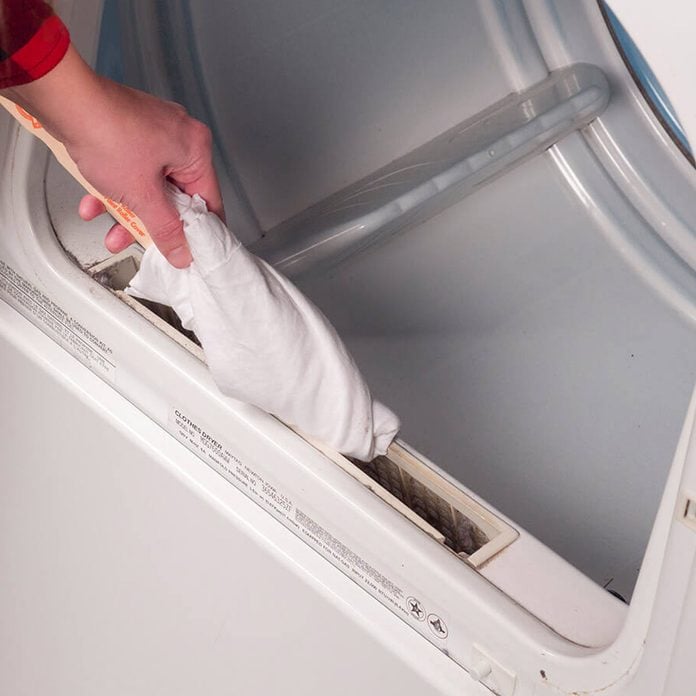
Use a Paint Stick to Clean Lint Buildup
Once in a while it’s important to clean the area around your dryer’s lint trap, as the screen doesn’t always catch all of the debris. A paint stir stick with a clean rag wrapped around one end makes a great tool for this task.
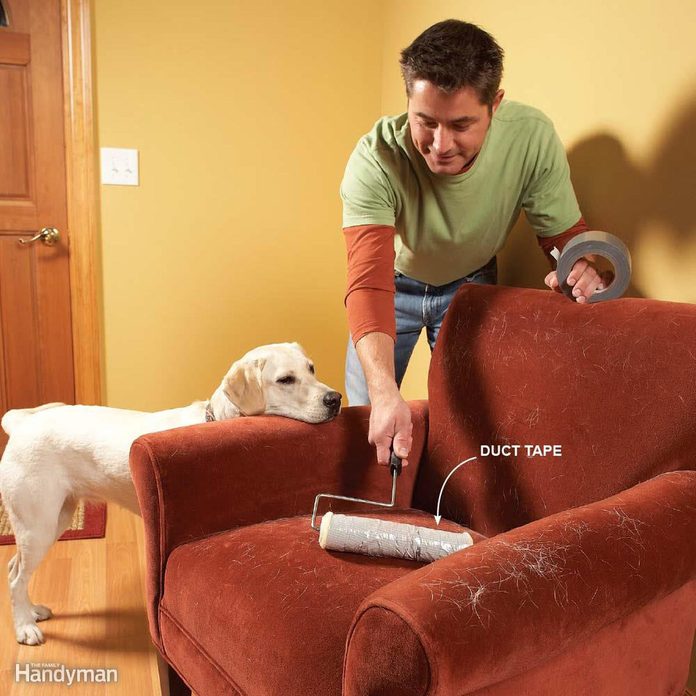
Remove Pet Hair with Duct Tape
The stickiness of duct tape makes it perfect for a makeshift pet hair remover and this method is faster than vacuuming. It also works on seats in vehicles. A sponge or cloth wrapped with duct tape works great for getting into corners.
Wrap duct tape around a paint roller cover, sticky side out. Roll the paint cover over furniture or carpet to pick up the pet hair. Add more tape as the surface gets full of hair.
Once you’re done removing hair, learn how to clean a microfiber couch here.

Remove Hard-Water Buildup with a Lemon
Remove hard-water buildup on your faucet with this simple, natural solution: Place half of a fresh lemon on the end of the faucet, wrap a small plastic bag around the lemon and secure it to the faucet with a rubber band. After a few hours, remove the lemon and wipe the faucet clean.
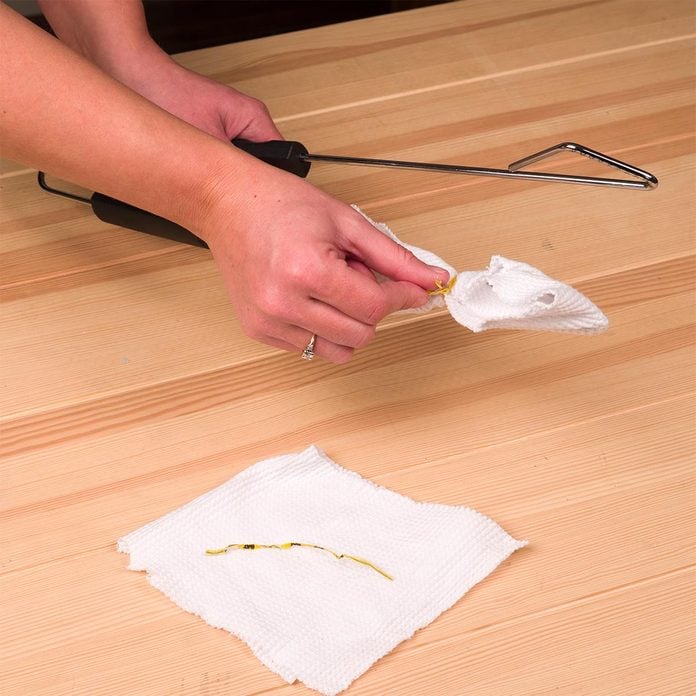
Use Tongs to Clean Blinds
Make quick work of cleaning your window blinds by using kitchen tongs! Secure rags to the ends of the tongs with twist ties, and then clamp the tongs on each blade to clean both sides of the window blinds at once.

Use a Floor Swiffer to Clean Walls
A Swiffer Sweeper floor mop is useful for more than just cleaning hard floors. Use it to dust interior walls and trim, too! Attach a dry cloth to the rectangle end and press it along walls and trim. You can pick up dust, cobwebs and dirt safely, without having to step on a ladder.
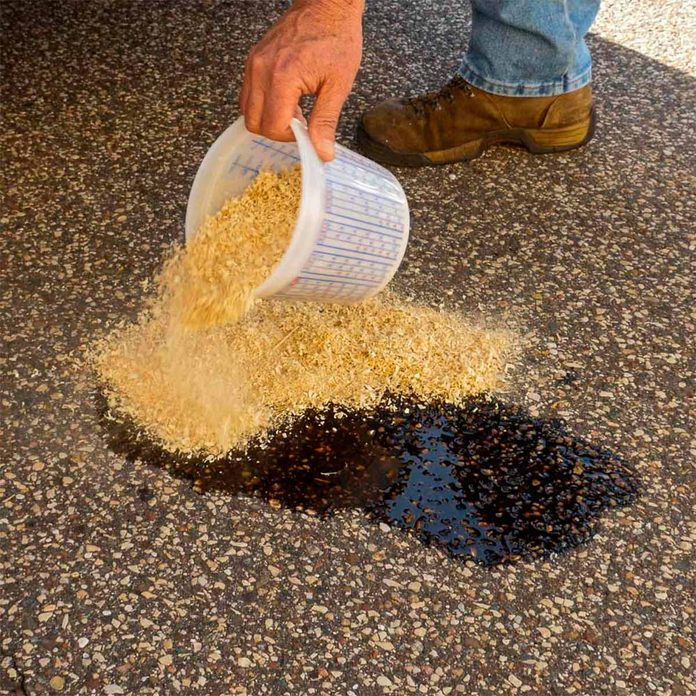
Use Sawdust to Soak Up Spills
Pick up oil spills on the driveway or in the garage using sawdust. The material is readily available in most home workshops — just open up the dust-collection bags on your orbital sander, miter saw, etc. Pour sawdust over the spill, let it soak up the liquid for about 20 minutes, and then sweep it up.
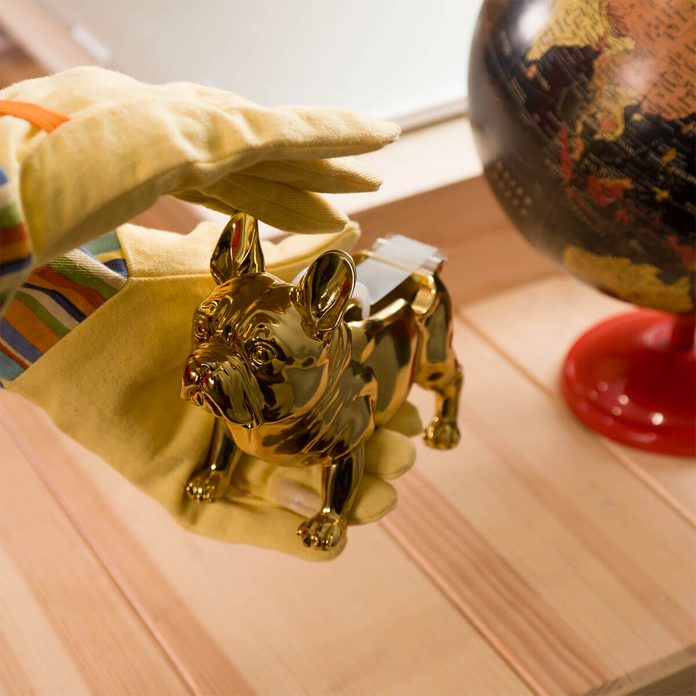
Wear Garden Gloves to Dust Knickknacks
Slip on a pair of cotton garden gloves and turn your fingers into cleaning tools for knickknacks and other small accessories throughout your home and office. Add a spritz of antibacterial cleaning solution and get rid of germs, too!
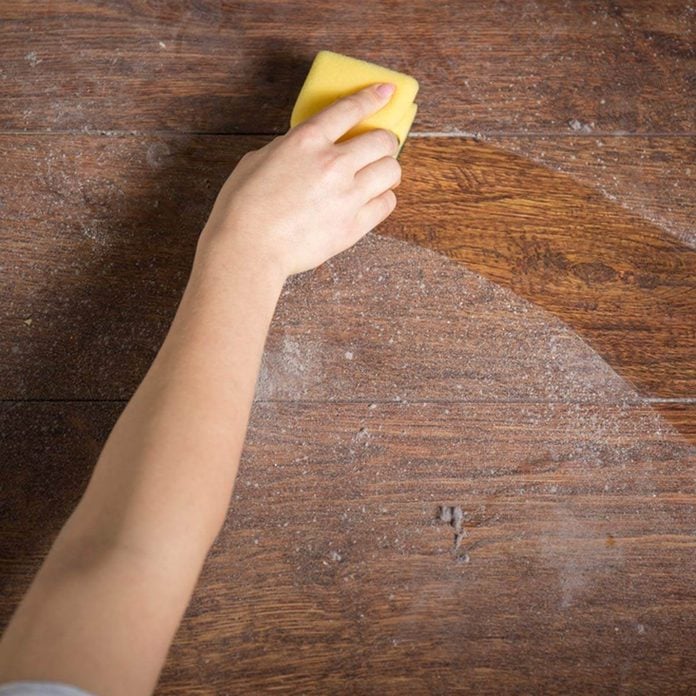
Skip the Furniture Polish
Of course, you need to polish your wooden furniture and hardwood floors every once in a while (once or twice a year, or when they begin to look foggy), but all you really need to keep them shiny is a dry microfiber cloth. Your furniture will actually get less dusty without using furniture polish.

Use Your Dishwasher for Dusting
Dishwashers are for so much more than just washing dishes. Leslie Reichert, founder of The Green Cleaning Coach and author of The Joy Of Green Cleaning recommends using yours to dust off knickknacks like mason jars and glass candle globes. Pretty much anything glass or ceramic should be fine going in the dishwasher, but you do want to stay away from putting meltable plastics.
If your dishwasher has developed a nasty smell, see how to get rid of dishwasher smells in one step.
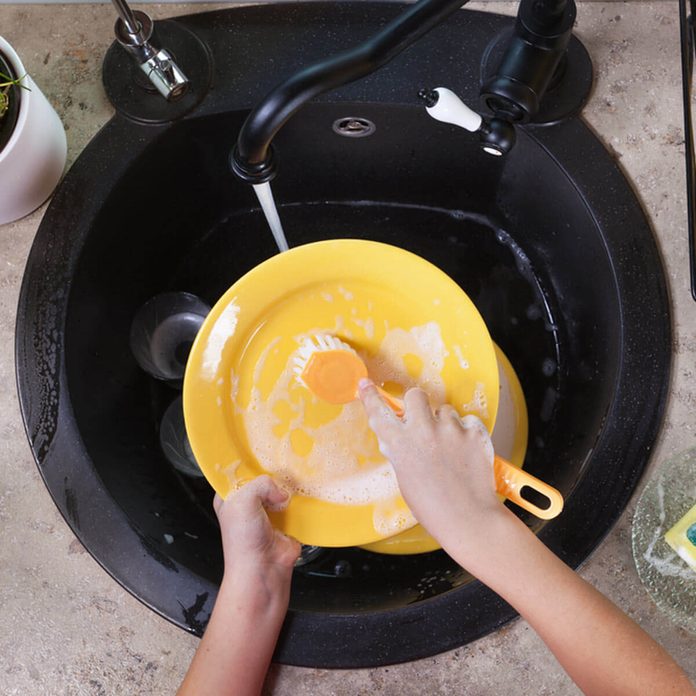
Buy a Soap Dispenser Dish Brush
According to Dana White, founder of A Slob Comes Clean, you can use a soap dispenser dish brush in your shower. “Mark it for the bathroom only with a permanent marker, and fill it with your favorite dish soap,” she says.
“Hang it in the shower, and you can scrub the shower while you’re in it anyway. Dish soap does a great job cleaning the bathroom!” Be sure to read up on the ways you might be cleaning your bathroom wrong, too.
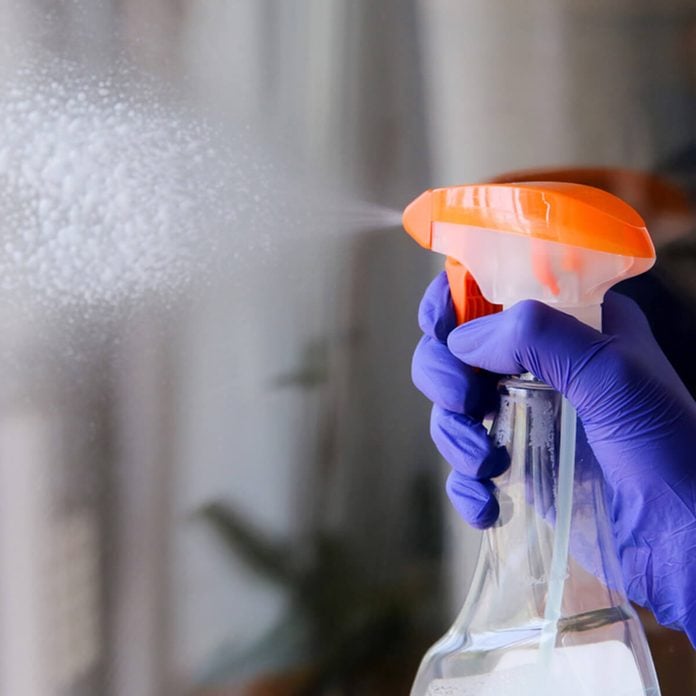
Skip the Mop Bucket
Sometimes moving around the mop bucket only makes more of a mess thanks to the dirty water splashing around.
Leslie Reichert, founder of The Green Cleaning Coach and author of The Joy Of Green Cleaning, has a bucketless mopping technique that works wonders: a spray bottle filled with diluted cleaning solution and a microfiber mop.
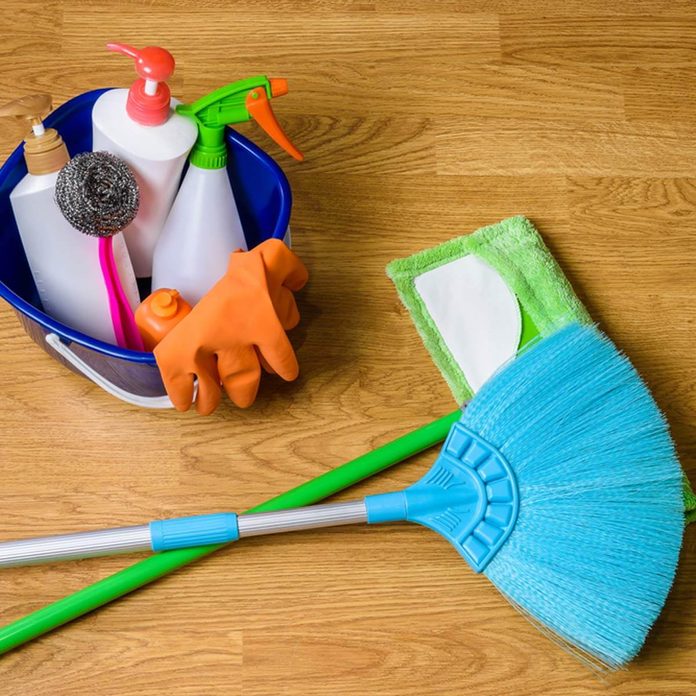
Combine Cleaning Tasks
Kill two birds with one stone by doing similar cleaning tasks at the same time. “Clean your baseboards when you are vacuuming or washing floors, clean blinds when you are cleaning windows, etc.,” said Becky Rapinchuk, owner of CleanMama.net.
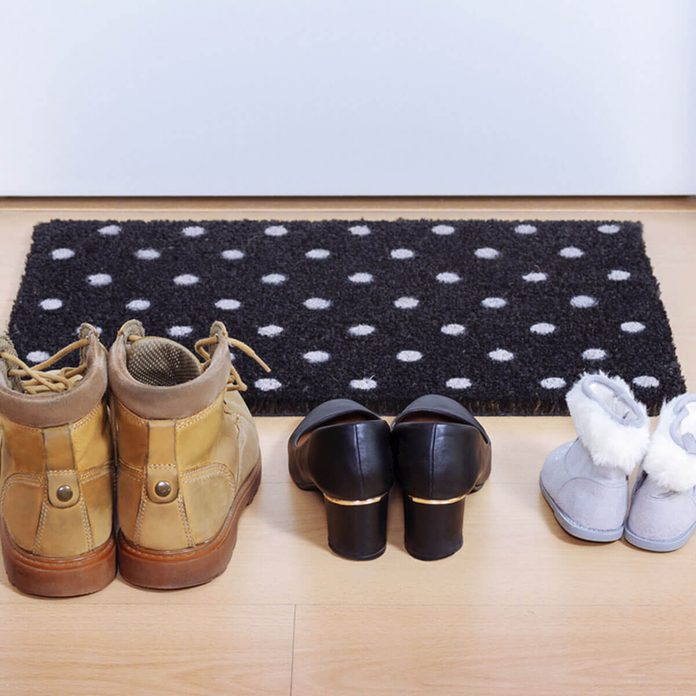
Don’t Forget the Doormat
Doormats are your best friend when it comes to trapping dirt, so make sure you have two — one outside the house and one inside.
This tip is especially helpful in the winter when you have salty and snowy boots going in and out of the house. Just be sure to clean the mats regularly as dirty mats contribute to the mess.
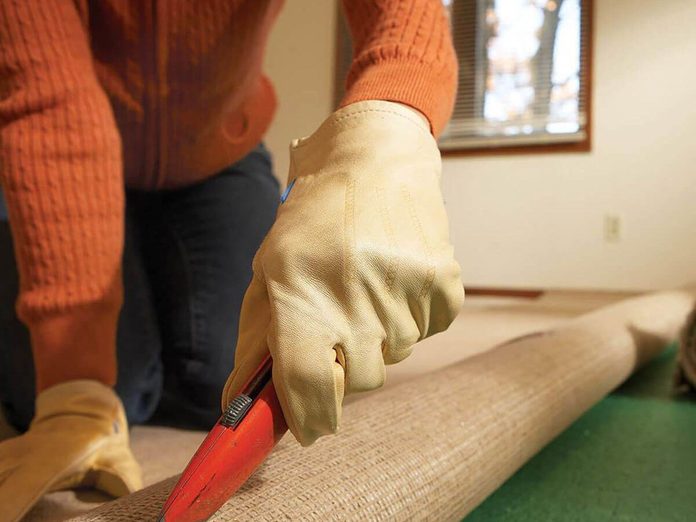
Ditch Your Carpeting
In most homes, carpet absorbs dust like a giant sponge. Even the padding underneath holds dust, which goes airborne with each footstep. Although ripping out your wall-to-wall carpet may sound radical, it’s the best thing you can do if you suffer from serious allergies.
For removing dust from air, the best thing you can do is to replace carpeting with hard floorings like laminate, wood or tile, and wet mop it regularly (with a microfiber cloth) instead of sweeping. Sweeping is more likely to stir up dust than to remove it.

Dust with Your Dryer
Blankets, pillows, slipcovers, drapes and other textiles not only trap household dust, but they create it as they shed and disintegrate. Curtains and drapes, in particular, get dusty because they absorb moisture and dirt from the outside and act as a landing pad for dust from ceiling fans and air vents.
The best idea for dusting them is to buy machine-washable items and launder them twice a year. For non-machine-washable textiles, throw them in the dryer on the air-fluff setting (no heat) for 20 minutes with a damp towel. The damp towel will attract pet hair, and the tumbling movement and airflow will remove the smaller particles for you.
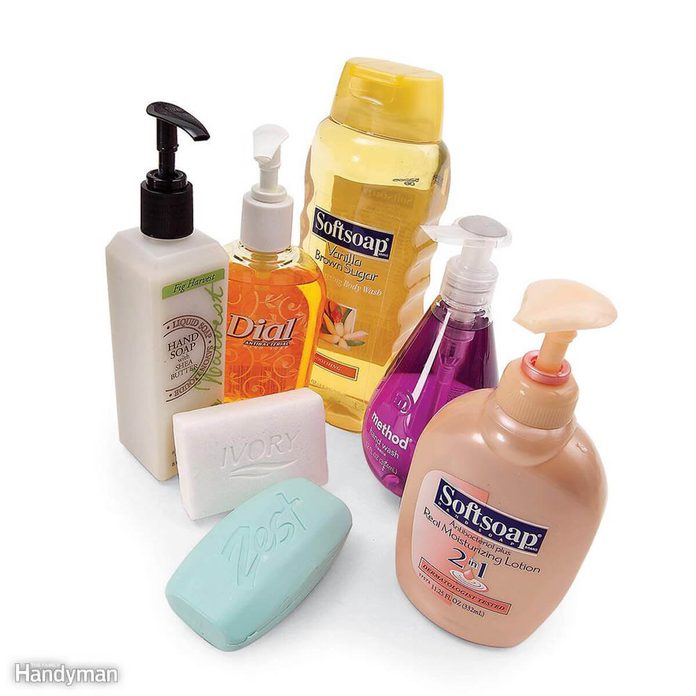
Simplify Bathroom Cleaning with Synthetic Soap
In terms of chemistry, some soaps aren’t really true soap. Any soap in a liquid or gel form and some bar soaps, such as Zest and Ivory, are synthetic soap. These non-soap soaps are much less likely to form that dreaded layer of tough scum on your sink or tub and will allow you to clean house faster.
Learn more about the best cleaning supplies for your home.

Clean the Air While You Clean the House
Your vacuum’s agitator brush and exhaust whip up dust that eventually settles on the surfaces you’ve just cleaned. Filter out some of that dust before it settles by switching your thermostat to ‘fan on.’ This turns on the blower inside your furnace and filters the air even while the system isn’t heating or cooling.
Leave the blower on for about 15 minutes after you’re done cleaning to remove dust from the air. But don’t forget to switch it back to ‘auto.’ Most blowers aren’t designed to run constantly.
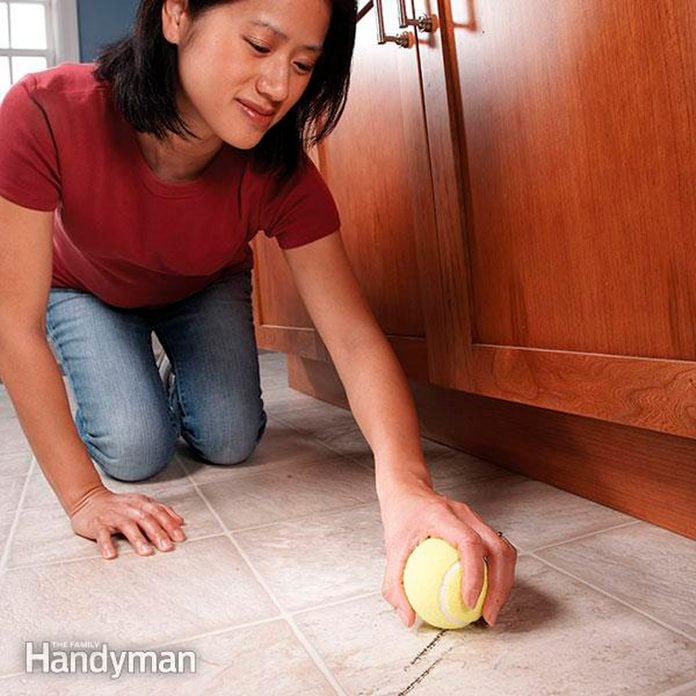
Erase Scuff Marks with a Tennis Ball
Clean off shoe scuff marks from vinyl flooring with a clean, dry tennis ball. A light rub and heel marks are ‘erased.’

Buff Off Heavy Grime
If you have glass shower doors in your bathroom and don’t keep on top of the cleaning, you can end up with soap scum so tough that it’s nearly impossible to remove. To clean your bathroom better, bring out the heavy equipment.
Pick up some polishing compound at a home center or an auto parts store and use an auto buffer to polish off the offending scum. If you don’t own a buffer, you can buy one for as little as $20 or borrow one from a gearhead friend. If possible, remove the doors and take them out to the garage to avoid messing up the bathroom.
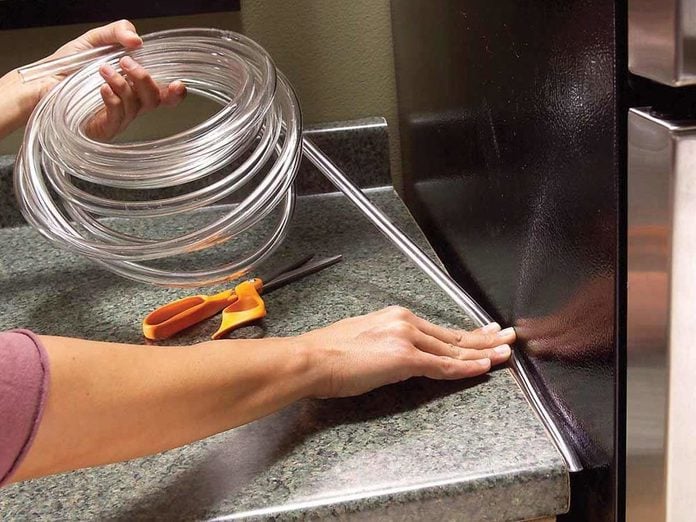
Fill Countertop Gaps with Clear Tubing
If crumbs, papers or even flatware fall into the gap between your countertop and refrigerator, fill the void with nearly invisible plastic tubing. Clear tubing is available at home centers in several widths starting at 1/8 inch and will help you clean house fast since you won’t be searching for crumbs.
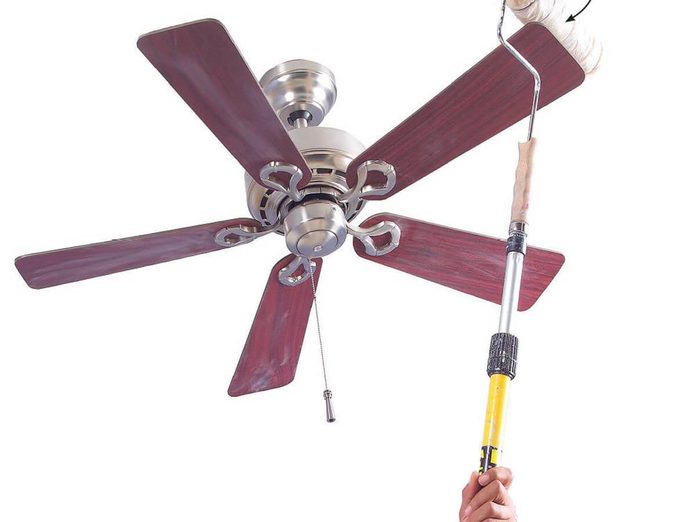
Dust Ceiling Fans with a Dryer Sheet
Unless you play in the NBA, dusting ceiling fans and other high, out-of-reach objects is a real chore. Wrap a dryer sheet around a clean painting roller and secure the ends with rubber bands. Attach an extension handle to the roller and dust away for the fastest way to clean house.

Clean Grout with a Bleach Pen
Use a bleach pen to transform your grout from grungy to great. This method is tedious, but the payoff is crisp, clean grout lines. Use the pen to ‘draw’ bleach across the grout lines. The pen allows you to target the grout without getting bleach all over the tile. Wait 10 minutes and then rinse.
For really mildewed grout, you may need a second application, and it can help to gently scrub the bleach into the grout with a toothbrush before allowing it to work for 10 minutes.
Make sure to run the fan in the bathroom and to avoid skin contact. This method is best for light or white grout. If you have colored grout, test a small area first. It might fade.
Instead of trying to find a bleach pen at the store, the cleaning solution to grout might already be in the bathroom.

Remove Tough Grime with a Magic Eraser
Whether it’s built-up soap scum on the shower walls, ground-in dirt on the floor tile, or dried toothpaste on the vanity top, a Magic Eraser sponge will make short work of it.
Just dampen it and rub it on the offending mess. In most cases, the mess will come right off. These sponges are especially useful for removing ground-in dirt from porous floor tile and getting those pesky non slip strips in the bottom of your tub clean.

Capture Dust — Don’t Just Spread It Around
Feather dusters and dry rags pick up some of the dust they disturb, but most of it just settles elsewhere. Damp rags or disposable cloths that attract and hold dust with an electrostatic charge (like Swiffer or Grab-it) work much better. Cloths that attract dust with oils or waxes also work well but can leave residue on furniture.
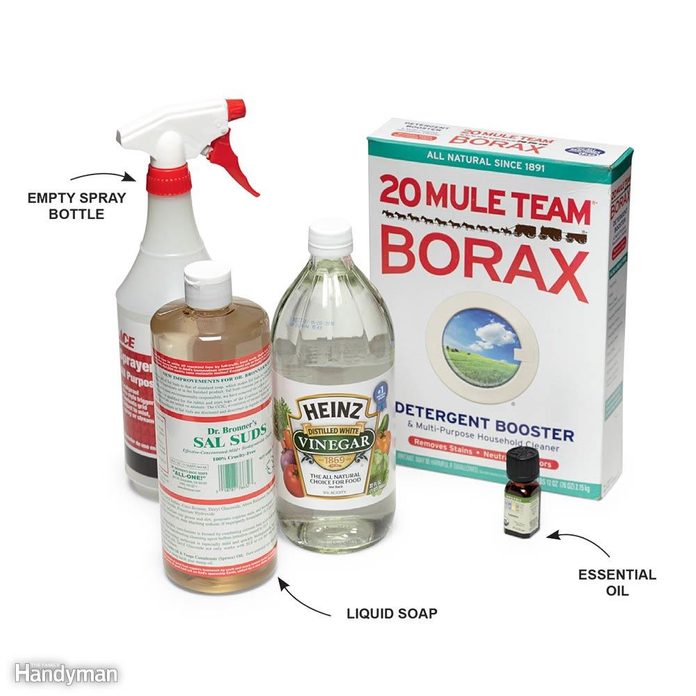
Make Your Own Greener Cleaning Solution
Professional housecleaner Maggie Orth likes to make her own cleaning products. Here’s her recipe for an all-purpose cleaning solution, modified from a recipe she found in the book Clean House, Clean Planet by Karen Logan (available from amazon.com).
In a 5-quart bucket, mix one cup of distilled vinegar, three tablespoons of borax, one gallon of hot water and 1/2 cup of soap (Maggie uses Dr. Bronner’s Sal Suds). Maggie likes to add 10 or 15 drops of tea tree, lavender or lemon oil for a nice fragrance.
Mix the ingredients and then pour some of the mixture into a spray bottle. Save the rest in a gallon jug. The raw ingredients will set you back $25 to $30, but you’ll have enough to last for years!
Use this mixture to clean tile, countertops and painted woodwork. It’s a good all-purpose cleaner, but it’s not the best for cleaning glass. Maggie uses club soda to clean glass.

Ban Shoes Inside (But Offer Slippers)
More than half of household dust enters your home through windows, doors, vents and on the soles of your shoes. Think about where you walk all day long (restrooms, city streets, construction sites, etc.) and all the bacteria and debris your shoes collect. Do you really want to track that inside?
An EPA study of homes where a doormat was added at the entrance and shoes were banned indoors showed a 60 percent reduction of lead dust and other contaminants in the home, as well as a significant reduction of allergens and bacteria.
Your first line of defense for how to remove dust from air should be a coarse-fiber heavy-duty doormat placed outside exterior doors. Inside, have everyone remove shoes at the door. Keep a bench, a shoe rack and a basket of cheap slippers available so no one has to walk around in their stocking feet on chilly floors.

Clean Under the Toilet Rim
If your toilet flushes slowly, the rinse holes under the rim may be clogged with mineral deposits. (Get a refresher on the parts of a toilet.) Use a hand mirror to see the holes under the rim of the toilet.
Bend a coat hanger flat and probe the tip into the holes to poke out any deposits. You can clean out those clogged holes without ever getting your hands dirty.
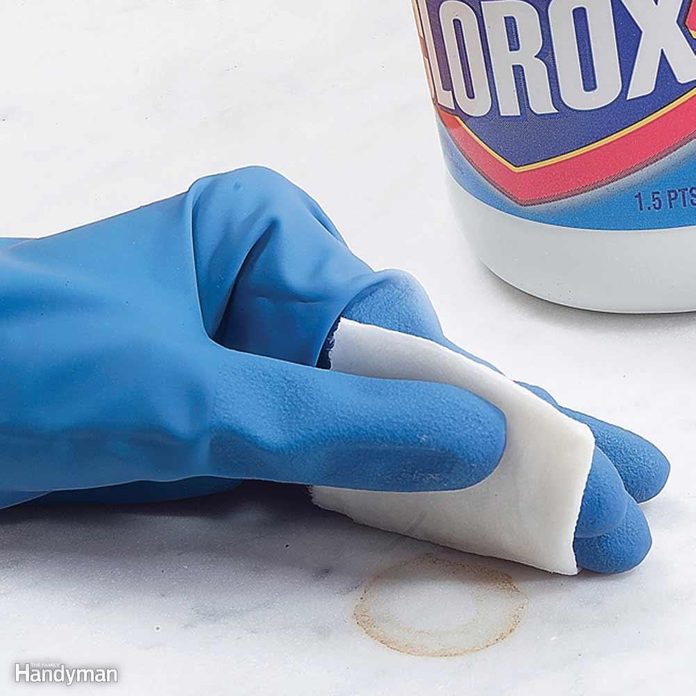
Bleach Away Stains
Remove stubborn stains from marble, cultured marble or plastic laminate with a bleach-soaked paper towel. Cover the towel with a cup to contain the bleach odor, and leave it in place overnight. If the stain has faded but not disappeared, just repeat the process.
Test this trick in a hidden area first; it could discolor the surface. Dealing with a whole countertop? You can renew it yourself.
Warning: If you have quartz countertops in your bathroom, it’s recommended you NOT use bleach.
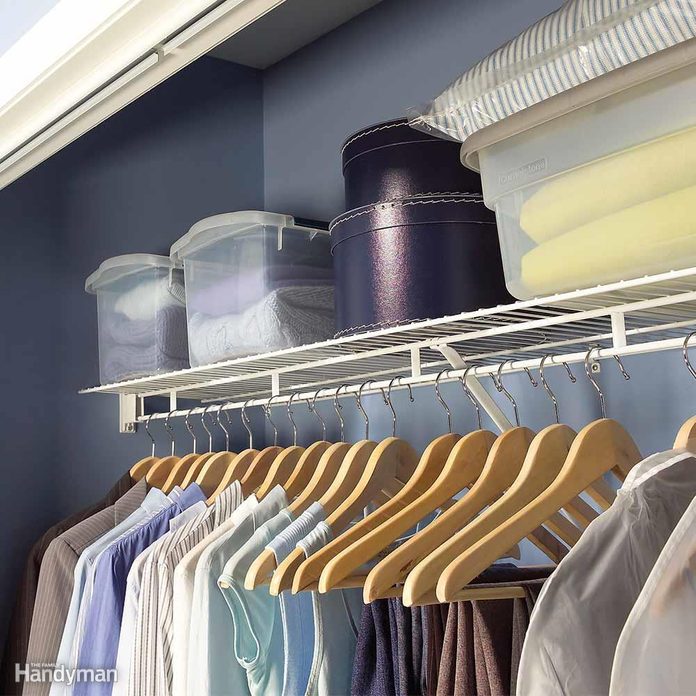
Keep Closets Clear for Easy Cleaning
Closets are dust reservoirs, full of tiny fibers from clothes, towels and bedding. Every time you open the door, you whip up an invisible dust storm. You can’t prevent clothes from shedding fibers, but you can make closets easier to keep clean and vastly cut down on dust.
- Box or bag items on closet shelves. Clear plastic containers are best — they lock fibers in and dust out and let you see what’s inside. When you dust, they’re easy to pull off the shelves and wipe clean.
- Enclose the clothes you rarely wear. Those coats you wear only in winter shed fibers year-round. Slip garment bags or large garbage bags over them. They help to contain fibers and keep the clothes themselves from becoming coated with dust.
- Keep closet floors clear. If the floor is cluttered, chances are you’ll just bypass it while vacuuming. But a wide-open floor adds only a few seconds to the vacuuming chore. And a wire shelf lets you clear all those shoes off the floor without losing storage space.
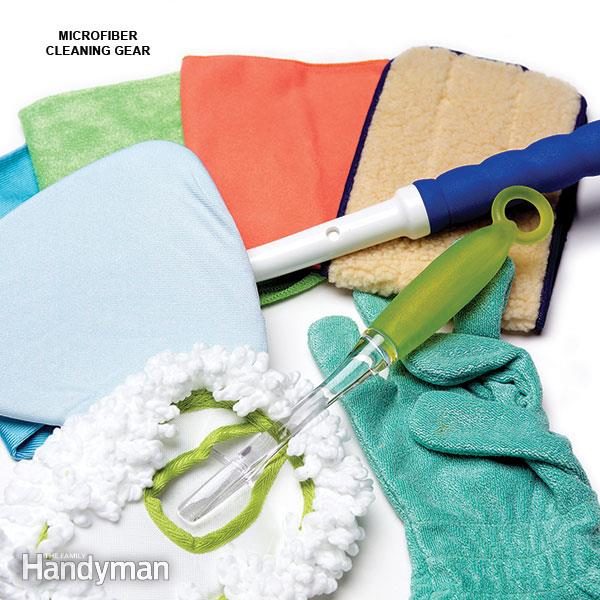
Clean Better with Microfiber Products
Microfibers are tiny strands (usually less than one-tenth the thickness of a human hair) that are sliced into even smaller strands and then woven into fabric.
Those tiny strands reach into crevices and provide millions of little pockets within the fabric to hold dirt particles. The strands also have sharp scouring edges, so microfiber cloths often clean effectively without chemicals or even water (you can use cleansers or water if you choose).
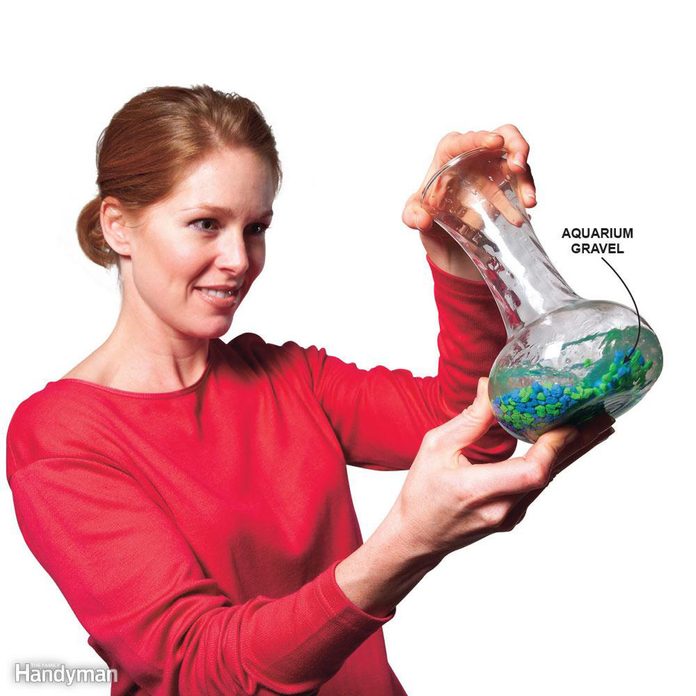
Use Gravel to Clean Bottles
Clean those narrow-necked jars and vases with small gravel (aquarium gravel works the best). Fill one-third of the jar with water. Add a handful of gravel, and then stir and shake the jar. The gravel will scour the inside of the jar clean.
Dump the gravel into a strainer, give it a quick rinse (so it doesn’t stink!) and save it for next time. You’ll wonder why you didn’t think of that yourself!

Consider a One-Piece Toilet
One-piece toilets are easier to clean (fewer nooks and crannies), but they’re also more expensive and can be harder to install than a two-piece unit (they’re a lot heavier than a separate bowl and tank).
If you’re feeling flush and want truly easy cleaning, consider a wall-mounted toilet. Find the perfect toilet for you with expert advice.
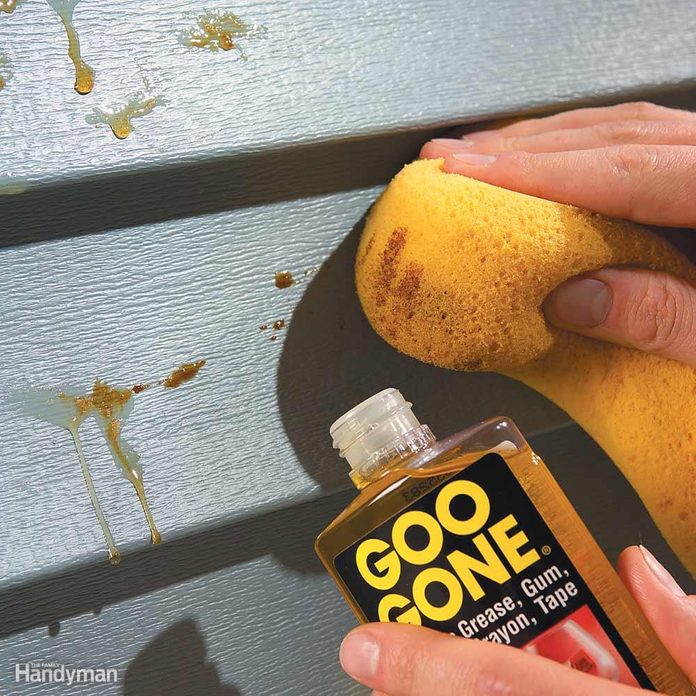
Remove Tree Sap from Vinyl Siding
If drippy trees or deck lumber deposit sap on your vinyl siding, don’t delay cleanup. The longer you wait, the more stubborn the sap will become. If you wait too long, you might have to use a pressure washer.
If you attack the fresh sap within a week or so, a common kitchen cleaner such as Formula 409 or Fantastik will likely remove the goo. You can also use a biodegradable product such as Simple Green. If standard cleaners won’t dissolve the sap, use a citrus cleaner such as Goo Gone.
Check the label of any product you use to make sure it’s recommended for vinyl and test it in an inconspicuous spot for discoloration. Apply the cleaner with a rag or sponge. Scrub tough spots with a soft-bristle brush for the fastest way to clean house.
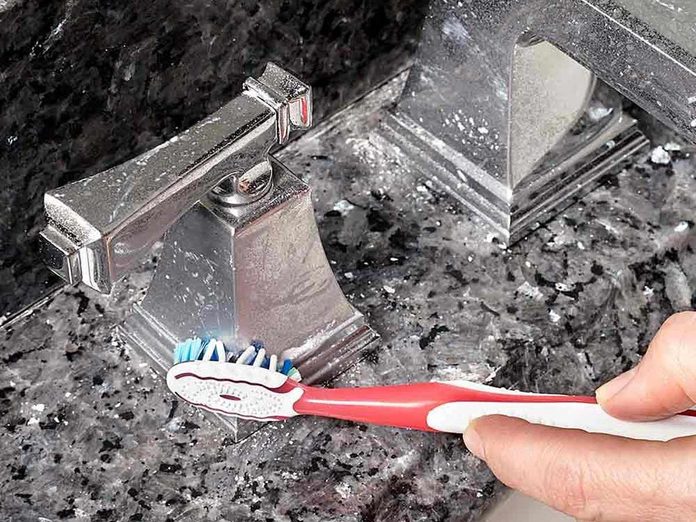
Wash and Wax Your Faucets
Every three months, use CLR Calcium, Lime and Rust Remover and an old toothbrush to clean all the faucets and lavatories. Then apply an automotive car wax like Turtle Wax and buff after the wax hazes. Your fixtures will look like new.
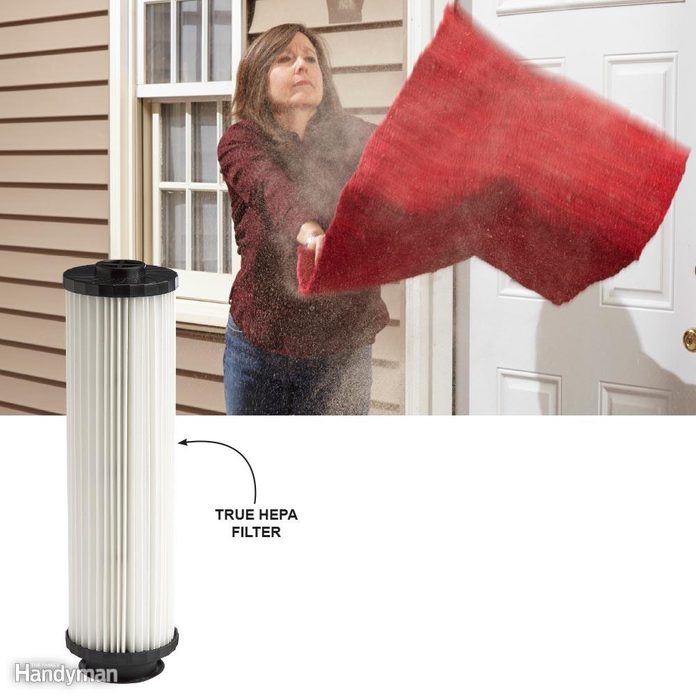
Make the Most of Your Vacuuming
The right vacuuming technique, combined with the right filters, bags and machine, has a significant impact on how much dust remains in your carpeting. Keep the following tips for how to clean dust in mind:
- Vacuum high-traffic areas twice a week and the rest of the carpeting and large area rugs at least weekly.
- Make numerous slow passes over the same area in all directions (fast passes stir up more dust than is being sucked up).
- Use certified True High-Efficiency Particulate Air (HEPA) filters to remove invisible particles and allergens. Look for the word ‘True” on the label.
- If you have allergies, upgrade to a sealed-body bagged vacuum with an airtight ‘sealed filtration’ system that works together with a True HEPA filter. This means all of the exhaust will exit through the HEPA filter instead of leaking dust back into your house through the machine’s housing. Sealed-body vacuums have rubber seals or gaskets around the lid and filter and will last 10 to 20 years. Brands include Riccar, Miele and Sanitaire.
- Buy high-quality vacuum bags. Inexpensive 2- or 3-ply paper bags leak more dust. Higher-quality cotton-lined paper bags are better, and top-quality synthetic cotton HEPA bags are the best. Bag capacity matters too. Higher-capacity bags capture more, smaller particles that would have otherwise clogged the filter.
- Clean all your bagless vacuum filters regularly and replace them every three months.
- Turn off the agitator brush on hard flooring so you’re not blowing dust into the air.
- Maintain your vacuum: Empty the canister frequently (always outside) and change bags and belts when needed. Keep the agitator brush free of hair and other material, and check the vacuum for cracks and loose hinges and get it serviced every so often to keep it running smoothly.

Vacuum First, Then Scrub
Do you ever find yourself chasing strands of wet hair or running into dust balls in the corners with your sponge or cleaning rag? You can learn how to clean your bathroom better and eliminate this nuisance by vacuuming the bathroom before you get out your cleaning solutions.
For really thorough cleaning, start at the top, vacuuming the dust from light fixtures and the top of window casings. Then work your way down. And finally, vacuum the floor methodically so you cover every inch. You don’t want to leave any stray hair or dust bunnies to muck up your cleaning water.
A soft-bristle upholstery brush works best for this type of vacuuming. Figure out what vacuum to use here.
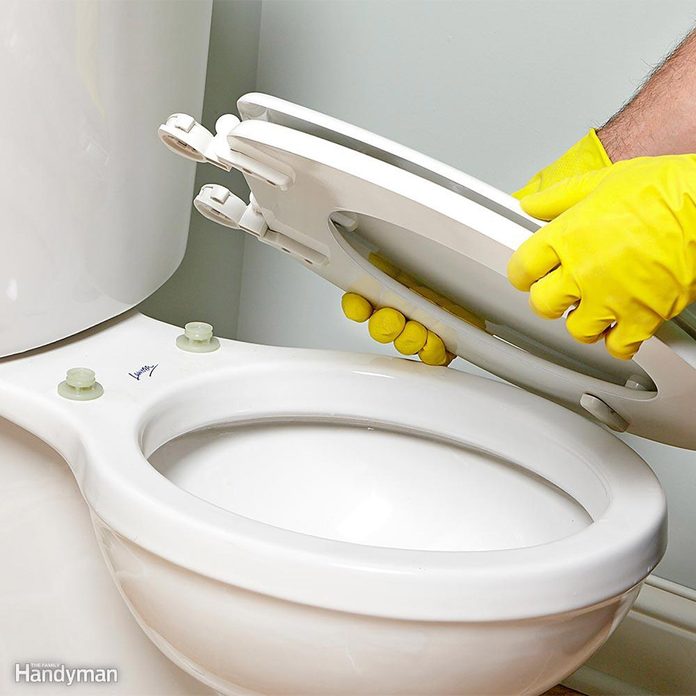
Install a Detachable Toilet Seat
It seems like no matter how hard you try, you can never get the hinges on the toilet seat clean. There’s always a bit of cleaning solution that seeps underneath and creeps out later. Installing a detachable toilet seat solves the problem.
This Bemis brand seat is easy to remove by just twisting two hinge caps about a quarter of a turn. Then you have easy access to clean under the hinges. Installation is straightforward and only requires a wrench.
Are your bolts rusted and stuck? Learn how to remove rusted toilet seat bolts here.
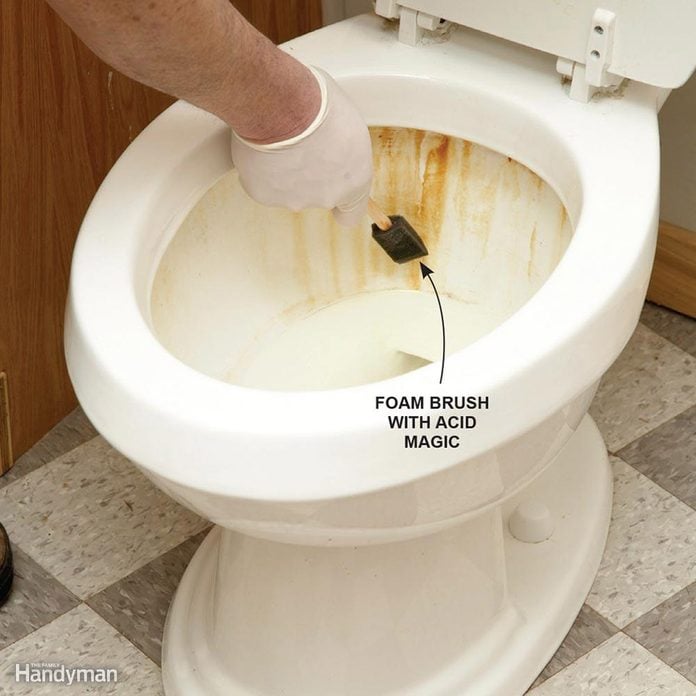
Remove Stubborn Rust Stains with Acid Magic
If you have a lot of iron in your water and struggle with rust stains in your toilet or bathtub, here’s a perfect solution. Acid Magic dissolves rust. It’s as powerful as muriatic acid but much safer and more pleasant to use.
You should still take all the precautions you would with any strong cleaning solution, like wearing gloves and safety glasses when you’re using it. But it’s better than regular acid because there are no noxious fumes, and it won’t burn your skin.
To clean rust from toilets and other porcelain surfaces, add one part Acid Magic to three parts water. Apply the mixture to the rust stains with a sprayer, brush or foam pad and watch the stain dissolve. Rinse with clear water. You can also use it full strength for stubborn stains. Avoid getting the acid on metal parts because they can discolor.
If you have rust on chrome fixtures, check out three surprising solutions for how to clean rust from chrome bathroom fittings.
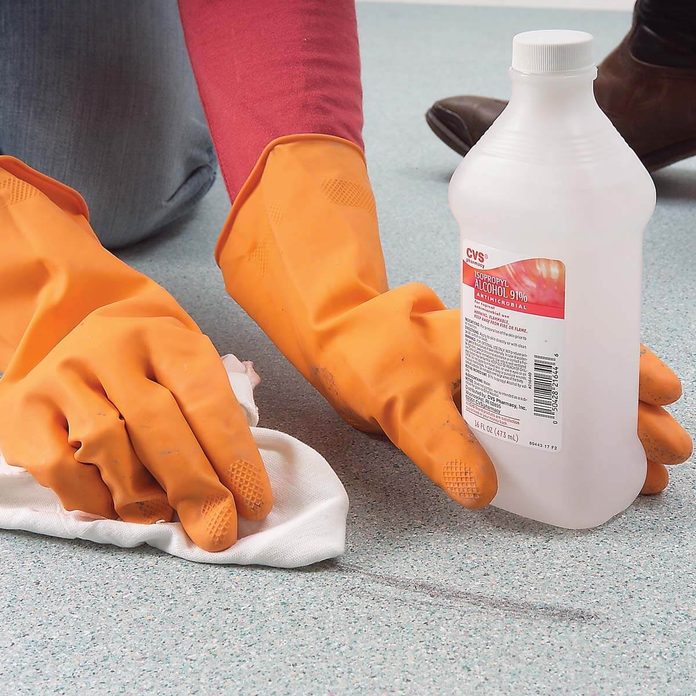
Remove Vinyl Flooring Stains with Rubbing Alcohol
Sheet vinyl “resilient” flooring is so easy to clean that it may never require anything beyond damp mopping with a cleaner intended for vinyl floors. But if your floor has marks or stains that still won’t come off, you can use stronger stuff.
Isopropyl alcohol, sold as a disinfectant at drugstores, is a mild solvent. It’s the best cleaner for heel marks and works on other tough stains too. You can also use lighter fluid or mineral spirits.
Remember that all these products are flammable; turn off any nearby pilot lights and hang rags out to dry before throwing them away. Learn how to use it to remove tough stains from vinyl flooring.
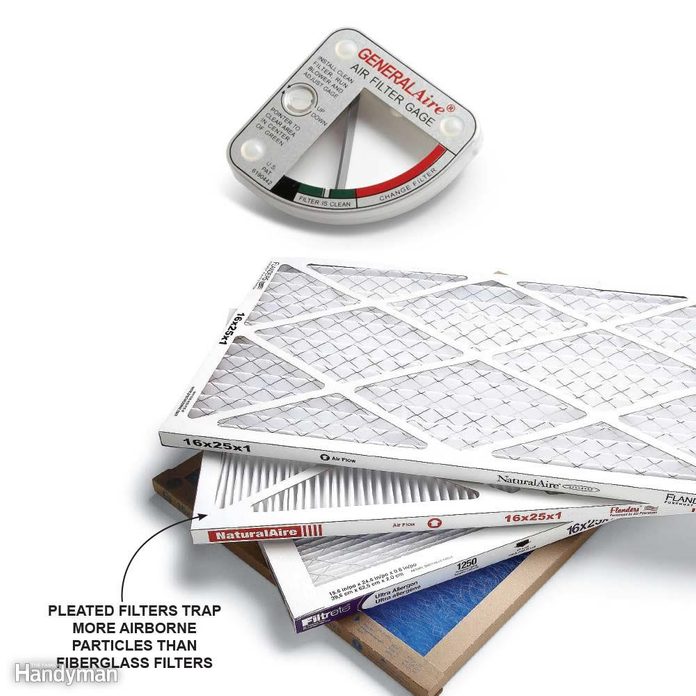
Upgrade Your Furnace Filter
Your home’s forced-air heating or cooling system helps to control dust by filtering the air. A standard cheap fiberglass filter protects your furnace from large dust particles and provides maximum airflow, but it does little to reduce household dust.
More expensive pleated filters usually provide a good balance between cost and filtration efficiency. These filters trap 80 to 95 percent of particles five microns and larger. Here are the best furnace filters to buy.
But if you have family members with allergies, consider spending more on high-efficiency filters, which capture 99 percent of airborne particles as small as 0.3 microns (bacteria and viruses, fumes and pollen). These furnace filters are one of the best for how to remove dust from air.
Be aware that you’ll have to run your furnace fan full time to get the maximum benefit from a high-efficiency filter, and you’ll have to change the filter frequently to prevent damage to your furnace from the reduced airflow.
If you go the high-efficiency route, install a filter monitor such as FilterScan, which automatically alerts you when your furnace filter needs changing, or the GeneralAire G99 Filter Gage, which requires you to manually check it.

Protect Your Shower Doors from Mineral Buildup
When the beads of water left on your glass shower door dry out, they leave minerals behind that are at best unsightly, and at worst can be tough as nails to remove if you let them build up. You can avoid beading water altogether by coating the glass with an auto-glass treatment.
Two brands are Aquapel and Rain-X. Follow the instructions on the package to apply the treatment to your shower door glass. You can buy Aquapel or find a local dealer online. You’ll find Rain-X at any auto parts store.
Let a showerhead amaze you with the comfort it can provide and check out 10 showerheads for a better shower experience.
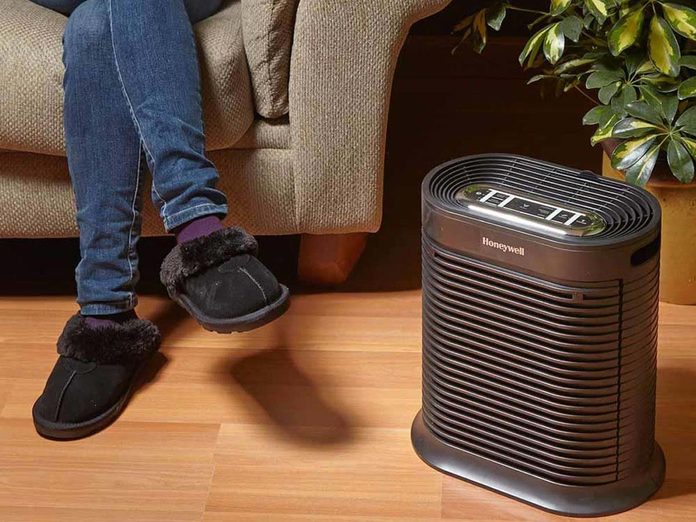
Clear the Air
Here are four things you can do to cleanse the dusty air in your home and how to remove dust from air:
- Place air purifiers in your most-used rooms to help suck up dust before it settles. Choose air purifier units with True HEPA filters rather than ionic cleaners, which release ozone, a respiratory irritant.
- Add a plant to every room. Plants naturally absorb common indoor pollutants like benzene and formaldehyde. NASA studies have shown that many plants, including aloes, palms and ferns, can absorb as much as 80 percent of the formaldehyde in a room in 24 hours.
- Keep the humidity in your house between 40 and 50 percent to help lower static electricity, which can cause dust to stick to surfaces and make them harder to clean. A humidifier (cleaned regularly) and leafy indoor plants will both increase humidity levels. Just don’t increase the level to more than 50 percent. This will promote the growth of mold, a far more dangerous condition than dust. You can monitor humidity levels with a cheap hydrometer from a gardening store.
- Keep your windows closed on windy days. Dust enters through doors and windows in the form of pollen, mold spores and airborne pollutants.
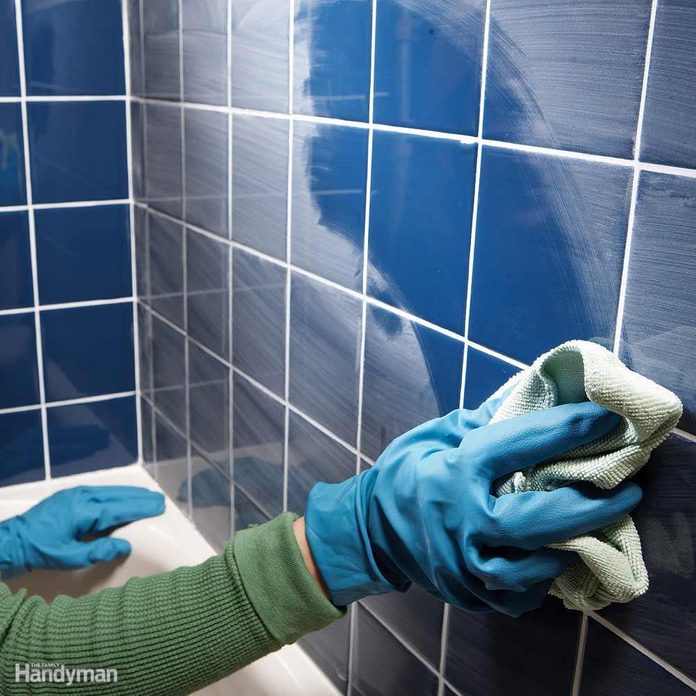
Make Grout Haze Clean-Up Easier
The thousands of microscopic fabric hooks on a microfiber cloth (available at discount stores) make it perfect to cut through the dried grout haze left after a tiling project. You’ll still have to rinse and repeat, but the haze will clean up faster than it would with an ordinary rag.